
Key Takeaways
- Lakeside mirages can create astonishing visions.
- They are caused by unique atmospheric conditions.
- These phenomena are observed worldwide.
Have you ever seen a lake appear to hoist castles into the sky?
Mirages around lakes can create some of the most surreal and captivating optical phenomena.
From a Fata Morgana seemingly elevating objects above Lake Superior to the ghostly Brocken Spectre halo at Loch Ness, the world is dotted with lakeside mirages that challenge our perceptions and inspire awe.
Lakes have been theatres for nature's magic, where the air's layers toy with light, crafting illusions that span from inverted skylines to looming shapes.
These mirages are not just for desert wanderers; they're global and grasp our curiosity with visual storytelling.
By understanding the science behind them, we unravel the mystique and appreciate the realities they convey.
Fata Morgana on Lake Superior
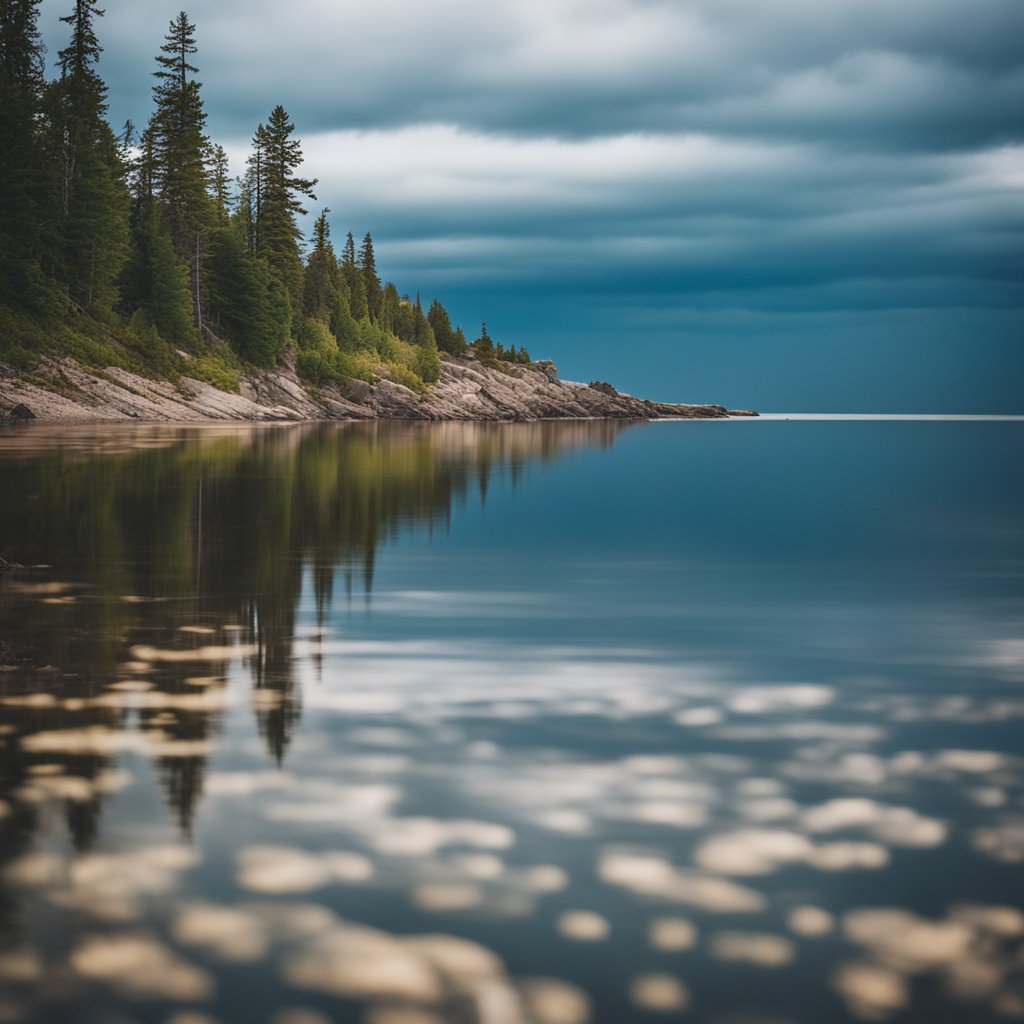
Have you ever seen something so bizarre and enchanting that you had to rub your eyes to make sure you weren't dreaming?
Well, imagine looking out across the vast expanse of Lake Superior and catching sight of a ship hovering above the water like a scene from a fantasy movie.
This is the surreal phenomenon known as Fata Morgana.
Picturesque Lake Superior has been the stage for this captivating illusion, with photographers like Shawn Malone capturing its essence.
On one particular day, May 22, 2015, a striking image was taken showcasing an ore boat seemingly suspended in the air!
What exactly is a Fata Morgana?
- It's a type of superior mirage.
- Occurs when layers of warm and cold air mix over the water.
- Light bends as it passes through varying temperatures, causing this captivating effect.
When does it happen?
- Particularly common in springtime on Lake Superior.
- Warm air above cooler water sets the stage for the mirage.
Why is it so spellbinding?
- Objects like ships look elongated or distorted.
- Sometimes they appear as if floating high above the horizon.
Images captured over the years tell us that this isn't just a one-off event—it's a recurring spectacle.
Here are a couple of snapshots of this stunning phenomenon:
- June 21, 2018: An image of Fata Morgana displaying two ore ships, again giving the illusion that they are floating above the horizon line.
- May 22, 2015: Shawn Malone's capture of an ore boat is a stunning portrayal of the Fata Morgana mirage.
Each portrayal of Fata Morgana over Lake Superior has given onlookers and photography enthusiasts a visual feast.
Next time you find yourself lakeside, keep your eyes peeled—you might just witness this entrancing mirage yourself!
Superior Mirage in Lake Ontario
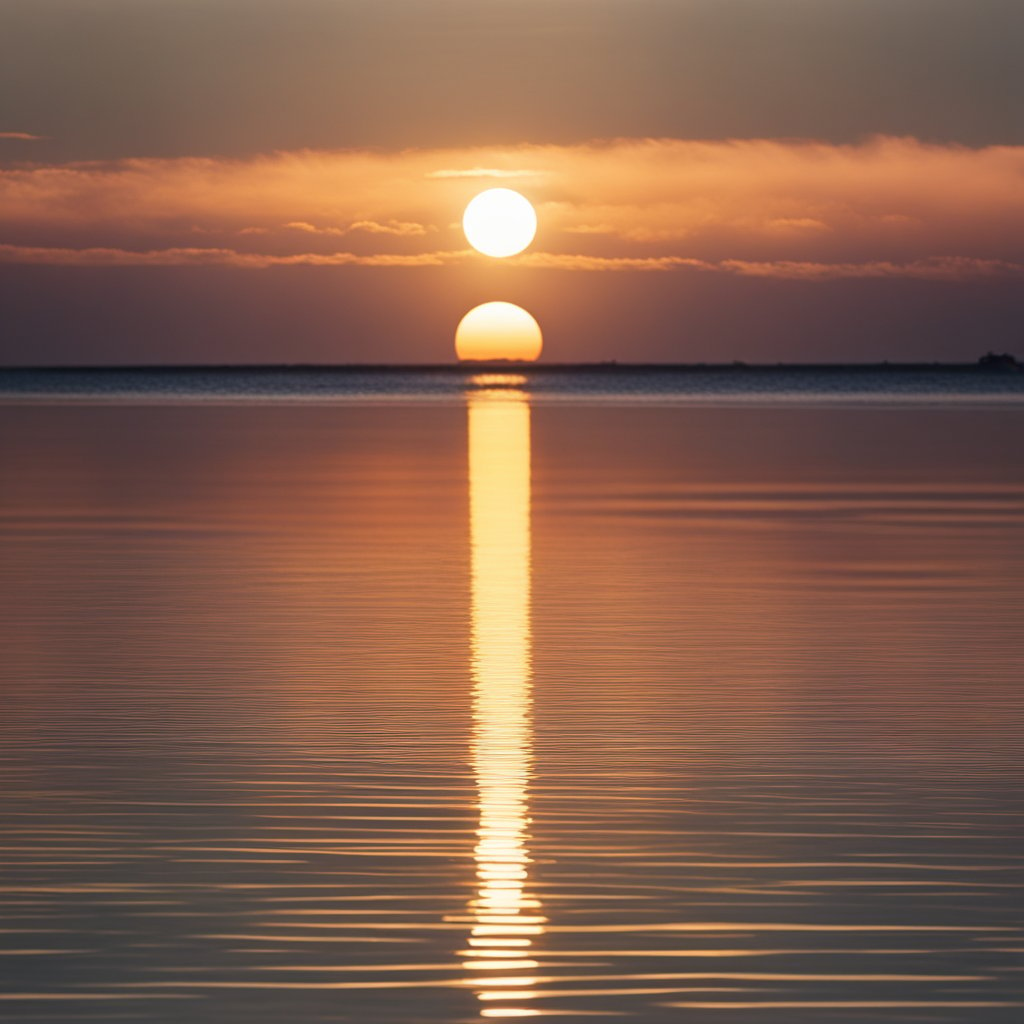
Have you ever seen a ship floating in the sky?
No, you’re not dreaming, and it’s not a CGI effect from a blockbuster movie; it's a superior mirage!
Lake Ontario is famous for this natural phenomenon, especially as spring warms the air quicker than the water.
What Is a Superior Mirage?
- It's an optical illusion caused by temperature inversion, where warmer air lies above colder air.
- Light bends towards the denser, colder air, creating a refracted image that appears above the real object.
Why Lake Ontario?
- Temperature inversions here are common in spring months.
- Warm air over cold lake water sets the perfect stage.
What Will You See?
- Ships might look like they’re floating above the horizon.
- Or sometimes, you’ll note stacked images of the same object.
Fun Facts:
- A Fata Morgana is a complex type of superior mirage involving several inverted and upright images, frequently visible here.
- Sensitivity to eye elevation means that the mirage changes as you move your eyes up and down.
So grab your camera next time you're lakeside.
You might just capture a surreal snapshot of a ship hovering over water or the skyline artfully distorted!
But remember, while your eyes might trick you, the science behind this is very straightforward: it's all about the temperature gradient—approximately 10 °C per 100 m can cause these mirages to appear.
Keep your eyes peeled, and who knows?
You might witness this enchanting phenomenon yourself.
Inferior Mirage on the Salton Sea
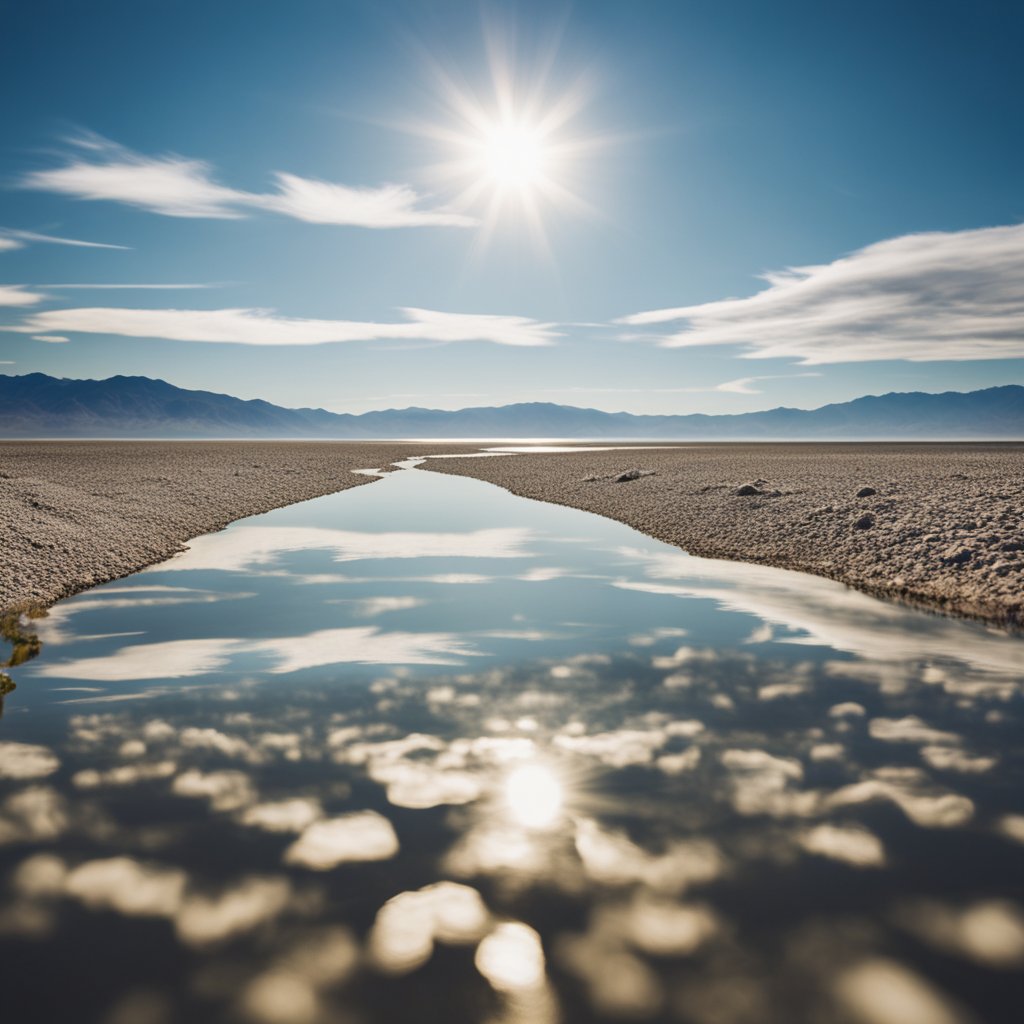
Ever been to the Salton Sea in California and caught sight of something that looks like water, or maybe distant objects floating mid-air?
Well, you aren't seeing things—this is an actual phenomenon known as an inferior mirage, and it's pretty cool to witness.
Why does this happen?
It's all about the air.
Near the lake's hot surface, air gets pretty warm and less dense.
As light passes from cooler, denser air above to this warmer air, it bends—or refracts—creating a mirror-like effect.
Here's what you might see:
- The illusion of water on the lake's surface
- Objects, such as boats or birds, appearing to be floating in the air
It's worth noting that this kind of mirage happens over a surface when the temperature decreases with height.
It's quite a sight and can make for some exceptional photo ops!
To capture the best shots, consider visiting during the diurnal maximum temperature, when conditions are often just right for mirages to form.
Just imagine the surprise and wonder of seeing the landscape transformed by this atmospheric trickery.
Remember, it's not magic—it's science!
So, have you ever experienced one of these lakeside mirages?
They're definitely a reminder of the playful side of nature.
Keep your camera ready and who knows, you might just snag one of the most surreal lakeside mirages out there!
Looming and Towering Mirages on Lake Erie

Have you ever seen the Cleveland skyline seemingly stretch into the sky like it's reaching for the stars?
It's not a futuristic city makeover—it's a towering mirage at play, right on Lake Erie!
Towering mirages happen when layers of air at different temperatures bend light, making distant objects, like buildings or ships, appear taller than they really are.
Imagine you're chilling on the lakeshore and you spot a ship.
It looks like it’s been stretched—an elongated optical illusion!
This is no trick of the imagination; it's the physics of light refraction.
The science behind it is straightforward: cold air lies close to the water's surface and warm air sits above it.
As light passes down to your eyes, it curves through these layers, stretching images upwards.
Voilà, there you have it: a towering mirage!
Looming mirages are another nature's magic act that messes with your sense of distance.
They can make landscapes or objects, like the landforms over 50 miles away, appear much closer, even as near as 6 miles.
It's like they've been gently lifted and placed just within reach.
You might think you could almost swim over!
Fun Fact!
This peculiar phenomenon isn't just a cold-weather occurrence.
During certain conditions on Lake Erie, the air's temperature stratification is just right to create these mesmerizing mirages.
So if you find yourself lakeside, keep your camera at the ready.
You might snap one of nature's coolest visual tricks: a lofty city skyline or a stretchy ship on the horizon.
Remember, it's not a fairy tale; it's all in the air.
The Brocken Spectre at Loch Ness

Have you ever stood by a lakeside and witnessed your shadow take on a life of its own?
At Loch Ness, home to the elusive mythical creature, such an extraordinary optical illusion known as the Brocken Spectre can appear, casting your silhouette in a majestic and somewhat spooky way.
What is the Brocken Spectre?
- It's not a monster or a mystical being, but rather a fascinating meteorological event.
- When the sun is positioned behind you, your shadow is projected onto a layer of mist, creating a larger-than-life figure.
- The shadow often appears haloed by vibrant rainbow bands, known as glory, giving it an ethereal appearance.
Photographing the Phenomenon
- Camera essentials: A camera with manual settings and a tripod for stability.
- Lens advice: A telephoto lens is advantageous as it allows you to zoom in while maintaining your position.
- Settings tip: To capture the phenomenon's vibrant halos, it's best to use lower exposure settings.
Occurrence at Loch Ness
- Loch Ness, famous for its legendary monster stories, can also host this ghostly spectre.
- The conditions need to be just right: a misty backdrop with the sun peeking through at the proper angle.
- The Brocken Spectre provides an additional layer of mystique to the already mysterious Loch Ness.
Next time you're by Loch Ness, keep your camera at the ready.
Who knows, you might capture not only the legend of Nessie but also the rare beauty of your own spectral giant looming over the waters.
Just imagine the stories you'll tell!
Reflection Mirage at Lake Saimaa
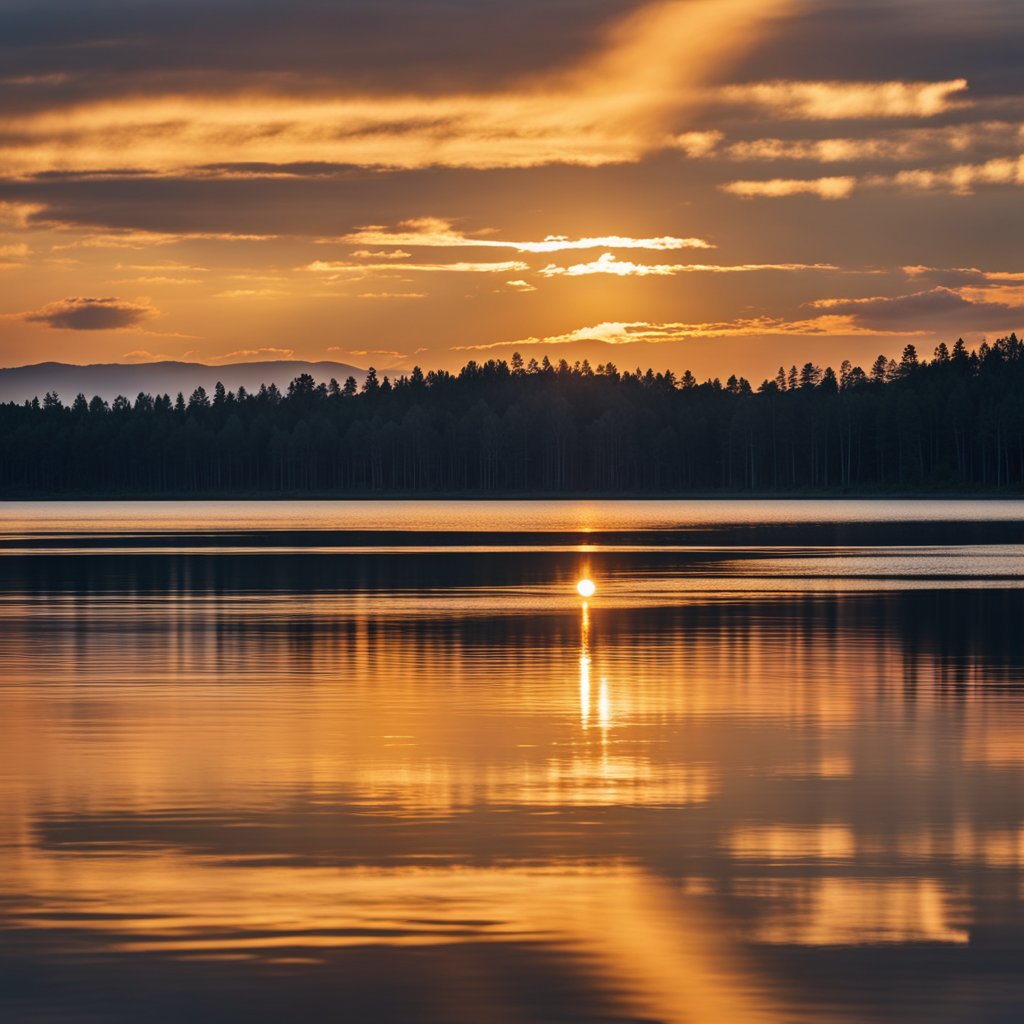
Have you ever seen a painting so realistic that you had to do a double-take to confirm it wasn't a photo?
Now, imagine experiencing that while standing at the edge of a serene Finnish lake.
That's the magic of Lake Saimaa's reflection mirage, where it seems as if an artist took their brush to the world, perfectly mirroring the surroundings on the water's canvas.
Let's break down what you might see at Lake Saimaa:
- Perfect Symmetry: The trees, the shoreline, even the clouds above seem to be reflected on the lake's surface so clearly that you might not tell the sky from the water.
- Calm Waters: It's this tranquility that helps create such a stunning mirage, making Lake Saimaa a unique photography spot.
Here are some quick facts about the lake:
- Lake Saimaa is the largest lake in Finland.
- Over 3,500 islands dot its waters.
- Its calmness is idyllic for moments when nature leaves everyone speechless with illusions like reflection mirages.
Now, you're probably thinking, "But how does this happen?" Well, under the right conditions, when the air is still and the water's surface is undisturbed, light plays a little trick on your eyes.
This phenomenon especially shines during golden hour when the low sun casts a glow that seems to set the water on fire with colors.
So, if you find yourself lakeside at Saimaa, keep your camera ready.
Reflection mirages don't come with a schedule, and you wouldn't want to miss capturing the moment when the world seems to flip upside down, would you?
Desert Mirage at Pyramid Lake

Have you ever witnessed something so surreal it made you question your eyes?
Picture this: Pyramid Lake, a tranquil oasis amidst the Nevada desert, where the stone formations carve a scenery that's already a visual poem.
But when the desert air turns up the heat, it whips up a little magic trick of its own—a mirage!
These mirages aren’t your run-of-the-mill optical illusions.
They can make it seem as if sheets of water are cradling the lake's borders, teasing the thirsty landscape with the promise of relief.
The phenomenon here is pretty straightforward:
- The Science: Hot air near the surface lifts, and cooler air above it creates a refractive index.
- The Consequence: Light bends, playing tricks on your eyes.
Imagine driving towards the lake on a sizzling day.
The highway's heat turns it into a mirror, reflecting the sky, so it looks like there’s water on the road.
It’s not just fascinating; it gives the whole place an ethereal quality, like you've stepped into another dimension.
Now, while your eyes might be fooled, your camera isn't.
Snap a pic, and what do you get?
A stunning, crystal-clear image of the mirage, minus any actual water.
These snapshots are not just keepsakes but a testament to nature's skill as a master illusionist.
So next time you’re near Pyramid Lake, keep an eye out.
You might just catch one of these fleeting masterpieces—just don’t forget to document the moment!
Remember, what happens in the desert doesn’t always stay in the desert—especially if it’s captured on camera as a spectacular mirage by Pyramid Lake!
Submarine Mirage at Lake Baikal
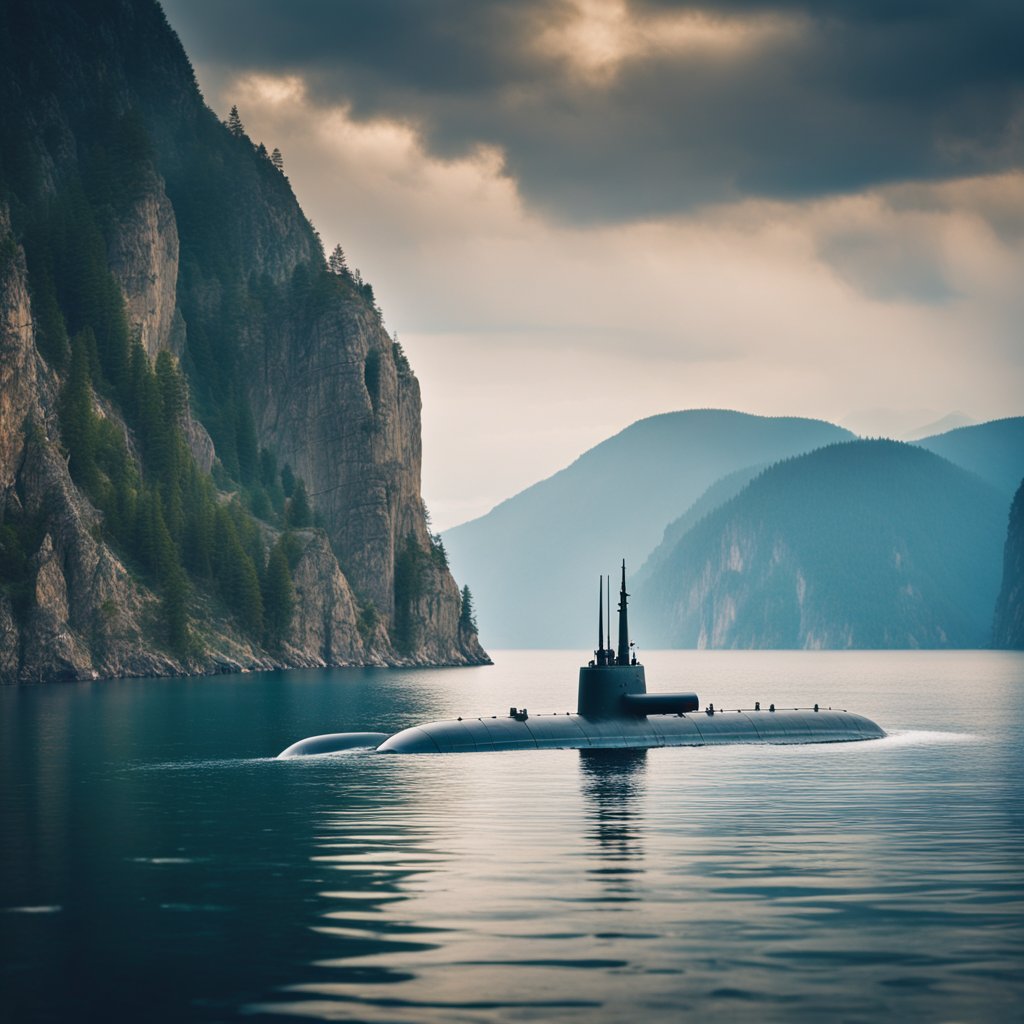
Have you ever seen a submarine glide across the water?
Now, imagine that at Lake Baikal, but with a twist – it's a mirage!
Nestled in the Siberian region of Russia, Lake Baikal, with its impressive depth of 1,642 metres, is not only the world's deepest but also the stage for some pretty surreal mirages.
Why does it happen?
Well, under the right conditions, light bending tricks your eyes, and islands start to do a little magic act of their own.
Picture this: you're gazing across the vast expanse of the lake when suddenly, islands seem to hover above the water or, even more astonishingly, take on the appearance of submarines breaking the surface.
Cool, right?
Here's what's fascinating:
- Location: Siberia, Russia
- Largest Freshwater Lake in Asia: True to its fame
- Depth: Deepest in the world at 1,642 metres
Now, don't get me wrong, there are actual submarines exploring the depths of Baikal – in fact, two manned submarines called Mir have reached its deepest points.
But when it comes to mirages, your imagination isn't diving too deep underwater; it's just the bending of light and the islands putting on a show.
- Light Bending: Optical phenomena making islands appear to float
- Submarine Appearance: Islands taking the shape of submarines
So, next time you're around Lake Baikal, and it looks like there are submarines where there shouldn't be, snap a photo!
It's not every day you see a natural illusion of this scale.
Just remember, what you're seeing isn’t a top-secret naval exercise; it's simply Mother Nature's own version of a magic trick.
Duck Mirage on Lake Winnipesaukee

Ever seen a duck appearing to float in midair?
Imagine squinting across the sparkling, rippling waters of Lake Winnipesaukee and catching sight of what seems like a line of ducks serenely hovering over the lake.
Surreal, isn't it?
Well, you've just witnessed a 'Duck Mirage.'
The secret behind this mind-bending spectacle is light refraction.
When warm air lies above the cooler lake surface, it bends the light downwards, creating an optical illusion that makes the ducks look as if they're suspended in the air above the water.
Some might say it's nature's own sleight of hand!
Captured Moments:
- Photographers' Delight: This is a dream scenario for photographers, with the opportunity to snap that perfect, otherworldly shot.
- Timing is Key: The phenomenon is more common during early mornings or late afternoons when the temperature difference between air and water tends to be higher.
Here's a quick rundown:
- What? Ducks appearing to float in the air.
- Where? Lake Winnipesaukee.
- Why? A fascinating interplay between light and temperature.
Next time you're by the lake, keep your camera ready!
You never know when the ducks decide to 'take off' into this beautiful mirage.
And hey, who wouldn't want to capture ducks on a literal 'air' swim?
Ice Mirage on Lake Mývatn
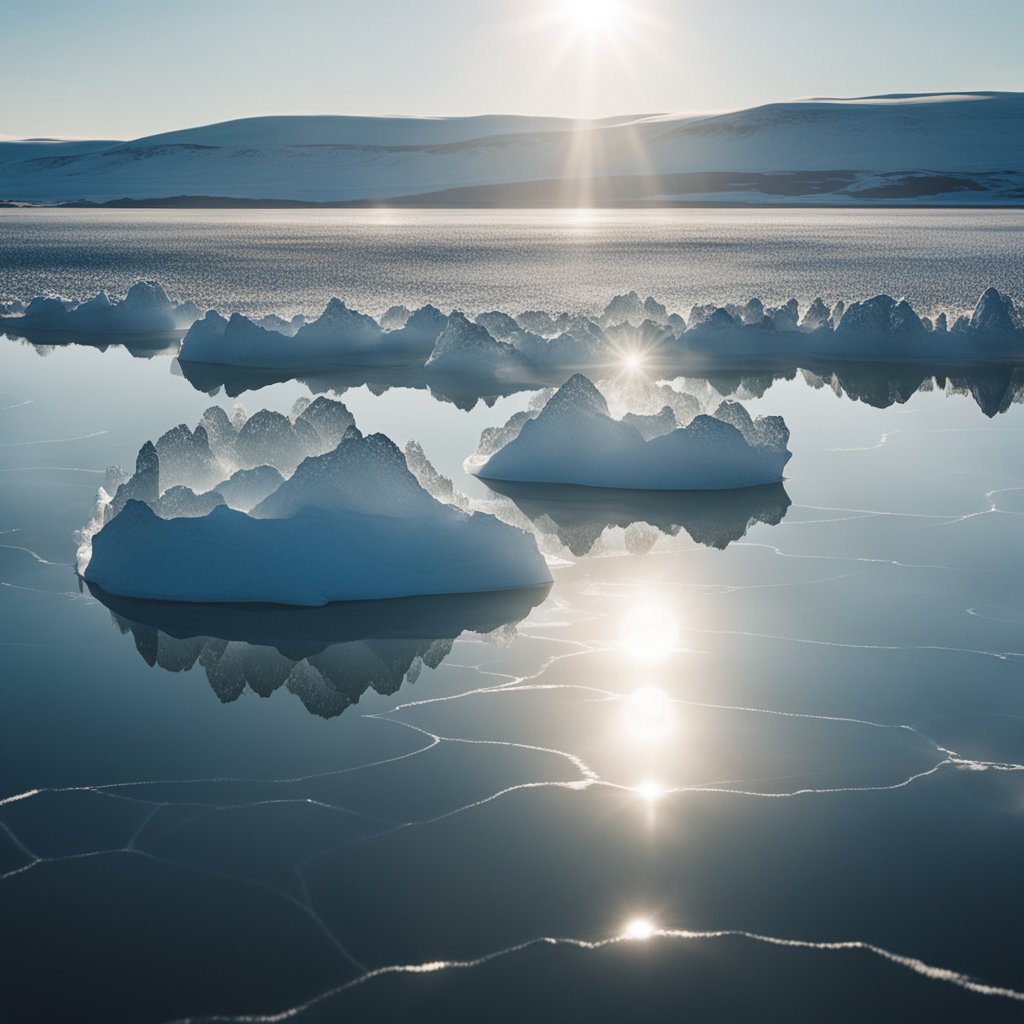
Have you ever gazed out at a frozen lake and noticed the horizon playing tricks on your eyes?
Well, Iceland's Lake Mývatn might just have the visual riddle you're looking for.
Imagine a cold day where the ice seems to continue forever, blending sky and land into one seamless wonder.
It's not just your eyes deceiving you; it's an ice mirage!
Location:
- Lake Mývatn, Iceland
Phenomenon:
- Ice Mirage
Conditions:
- Cold temperatures
- Interaction of ice with light
Sensory Experience:
- Eye-catching blend of sky and ice
- Ethereal visual effect
Around Lake Mývatn, when the temperature drops, the crisp air above the ice refracts light in a peculiar way.
This refraction can cause a mirage, where the ice and snow harmonize with the sky above, crafting an endless vista of icy expanse.
- Visiting Tip: For the most impactful experience, visit when the lake is at its calmest and the weather is coldest. This combo sets the stage perfectly for the mirage to occur.
But why does this happen?
It's all about the science of light.
Cold air is denser, and when it sits just above the ice, it bends the light towards your eyes differently than the warmer air above it.
This bending causes your brain to see landscapes that aren't really there, or in some cases, to see the landscape continue indefinitely.
Remember, no need to rub your eyes or adjust your camera's lens.
What you're witnessing is Lake Mývatn's very own chilly magic trick—an ice mirage that you'll want to share but might find hard to explain!


